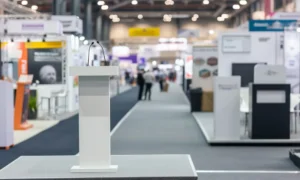Introduction to DHI Hair Restoration
Loss of hair is an all-too-common problem that ails both males and females and drives them towards seeking effective as well as lasting solutions. DHI hair restoration is one such state-of-the-art technique currently available in the market that delivers natural-looking growth of hair without any significant time off from daily life. This process differs significantly from traditional processes and uses highly accurate technology for implanting the hair follicles without pre-existent incisions. As a result, it emerges as one of the most sought-after hair transplant solutions.
The Technology Behind DHI Hair Restoration
DHI hair transplantation is founded on state-of-the-art medical technology designed to provide a high survival rate for implanted hair follicles. The procedure relies on a specific device referred to as the Choi Implanter Pen, which allows surgeons to extract and implant hair follicles with unprecedented accuracy. The method eliminates the use of incisions, reducing trauma to the scalp while offering a high follicular retention rate.
Compared to the traditional techniques such as FUE (Follicular Unit Extraction) and FUT (Follicular Unit Transplantation), DHI minimizes follicular damage and increases the survival of the graft. This leads to patients experiencing greater density, a more natural-looking hairline, and less healing time compared to traditional hair transplant procedures.
DHI Hair Restoration Procedure Step-by-Step
Understanding the DHI hair transplantation process step by step allows patients to be well-prepared with appropriate expectations. The process follows a methodical and meticulous approach:
Consultation & Scalp Analysis – The first step involves the assessment of the patient’s scalp condition, donor area viability check, and customization of a treatment plan.
Hair Follicle Extraction – Under the guidance of a fine-pointed extraction instrument, isolated hair follicles are removed from the donor area, typically the nape of the head.
Choi Pen Loading – Extracted follicles are loaded into the Choi Implanter Pen that allows precise placement without incising the scalp.
Implantation Process – Follicles are implanted into thinning or balding areas in a natural manner, allowing normal-looking hair development patterns.
Post-Procedure Care – Patients are provided with special aftercare advice to promote healing, reduce swelling, and improve follicle retention.
Main DHI Hair Restoration Advantages
The advantages of DHI hair restoration make it a well-loved method for individuals seeking a long-term and efficient solution for baldness:
No Scars or Stitches – Since the technique is not performed with cuts, no scars are visible, making it ideal for individuals who desire short haircuts.
Improved Graft Survival Rate – The Choi Implanter Pen aids in improving the survival rate of the implanted hair follicles, thus leading to an improved success rate for the treatment.
Improved Recovery Time – DHI is a less invasive process than other procedures, and patients can resume their daily activities in a couple of days.
Natural Hair Growth – The procedure facilitates smooth incorporation with indigenous hair, which translates into a natural hairline and undetectability.
More Control Over Hairline Design – There is more control by the surgeon over the implantation angle, depth, and direction, which means more effective aesthetic results.
DHI vs. Other Hair Transplant Procedures
Comparing DHI hair transplantation to other procedures reveals why DHI is superior:
- DHI vs. FUE: DHI skips the incision-making step at the recipient site, leading to faster healing and enhanced graft survival rate.
- DHI vs. FUT: Unlike FUT, where a section of scalp has to be sliced, DHI is a less painful procedure and leaves no linear scar.
- DHI vs. PRP Therapy: PRP therapy encourages hair growth, but it cannot provide a long-term solution in comparison to DHI.
Expected Results and Success Rate of DHI Hair Restoration
Results of DHI hair restoration begin to show in the time frame of three to six months, and visible hair growth is evident within 12 to 18 months. The success rate is over 90%, making it one of the most successful techniques of hair restoration. Since the implanted hair never balds, the result is natural and permanent.
FAQs on DHI Hair Restoration
To respond to the commonly asked questions, here are the responses to them about DHI hair restoration:
How effective is DHI hair restoration?
DHI is highly effective, with a graft survival rate of more than 90% and lifelong results.
Is the DHI hair restoration process step-by-step painful?
The process is performed under local anesthesia, and therefore it is not painful.
What are the risks or side effects of DHI hair restoration?
Mild swelling and redness that last a few days are typical side effects.
How long is the recovery time for DHI hair restoration?
7-10 days is the typical recovery time for most patients, and activities are largely unrestricted.
Who is a good candidate for DHI hair restoration?
Healthy donor hair and pattern baldness patients are good candidates.
How costly is DHI hair restoration?
The cost is established by the clinic, the number of grafts required, and the location.
Conclusion
DHI hair restoration is among the most scientifically backed and advanced methods of hair regrowth. With its high success rate, minimally invasive method, and natural look, it is an ideal solution for individuals who are suffering from hair loss. For anyone willing to undergo this procedure, it is essential to go to a well-established hair restoration clinic with a proven history.
As a leader in innovative hair restoration, BlueMagic Group International provides state-of-the-art DHI hair transplant procedures, ensuring patients worldwide achieve the best possible results. A consultation with their specialists can help individuals choose the most appropriate solution for enjoying fuller and healthier hair.





























